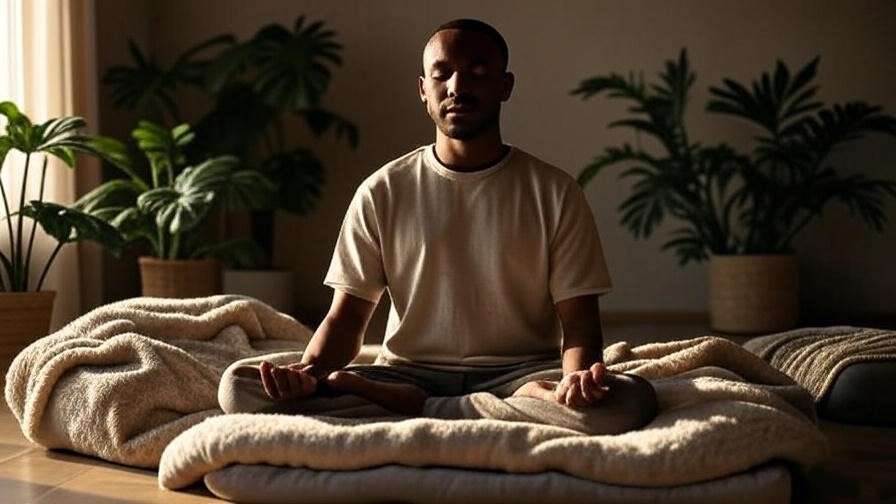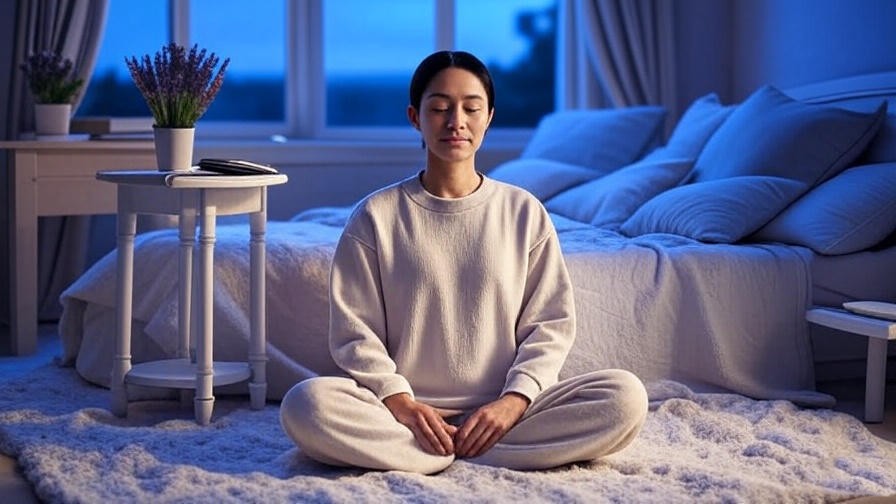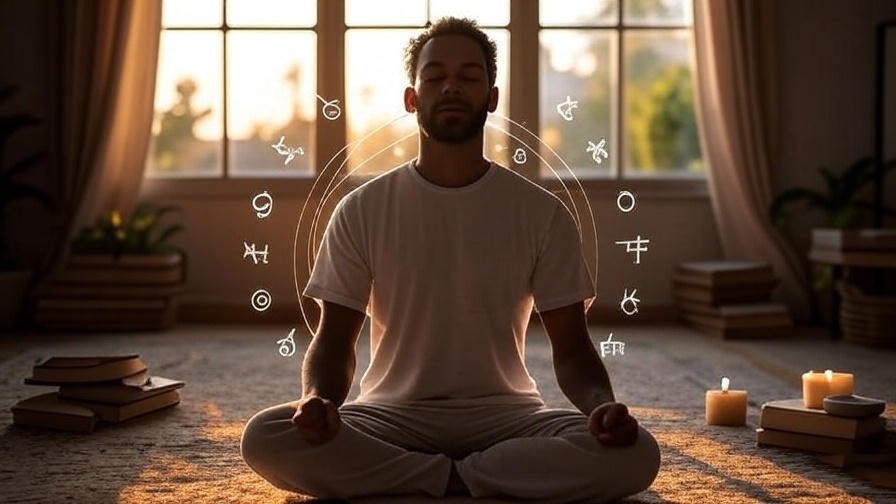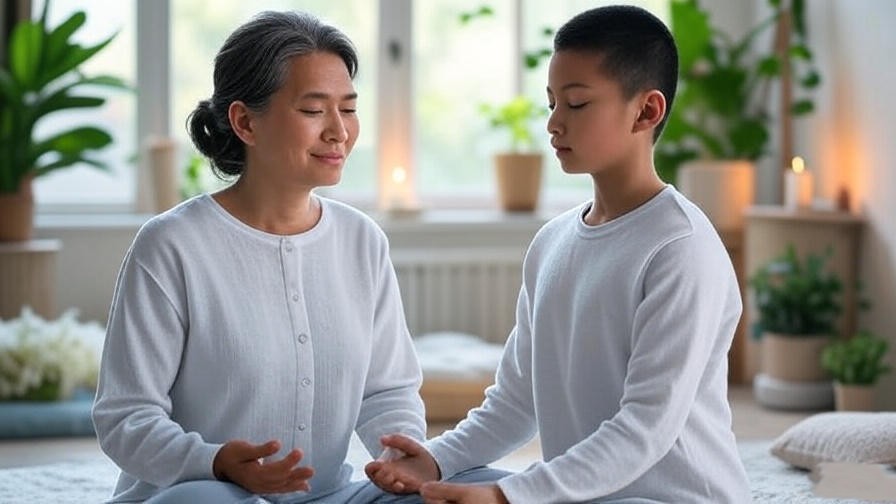Picture this: It’s the end of a chaotic day, your mind is racing with to-do lists, and stress feels like an unwelcome guest that won’t leave. You long for a moment of calm, a way to quiet the noise and reconnect with yourself. This is where meditation, specifically Adaji Brahm how to meditate, comes in—a transformative practice rooted in the teachings of Ajahn Brahm, a renowned Buddhist monk whose wisdom has guided millions toward peace. His approach, grounded in simplicity, kindness, and letting go, offers a path to deep relaxation, better sleep, and holistic well-being. In this comprehensive guide, we’ll explore Ajahn Brahm’s meditation techniques, providing you with practical steps to cultivate calm, reduce stress, and enhance your emotional and physical health. Whether you’re a beginner or a seasoned practitioner, this article will empower you to embrace meditation as a cornerstone of a happier, healthier life.
Section 1: Who Is Ajahn Brahm and Why His Meditation Approach Matters
Ajahn Brahm’s Background and Philosophy
Ajahn Brahm, born Peter Betts in London in 1951, is a Theravada Buddhist monk and the abbot of Bodhinyana Monastery in Western Australia. After studying theoretical physics at Cambridge University, he trained under Ajahn Chah in Thailand, embracing a life of mindfulness and compassion. His books, such as Mindfulness, Bliss, and Beyond and The Art of Disappearing, have inspired millions with their accessible, humorous, and profound insights. Ajahn Brahm’s philosophy centers on simplicity: meditation isn’t about achieving perfection but about letting go of striving and embracing the present moment with kindness. His teachings resonate with those seeking holistic well-being, as they address mental clarity, emotional balance, and even physical relaxation, which can improve sleep quality.
Why Choose Ajahn Brahm’s Meditation Techniques?
What sets Ajahn Brahm’s approach apart is its emphasis on joy, non-judgment, and ease. Unlike some meditation practices that feel rigid or goal-oriented, his methods encourage practitioners to relax into the process, making it ideal for beginners and those struggling with stress or insomnia. Research supports the efficacy of mindfulness-based meditation, with studies showing a 20–30% reduction in cortisol levels (the stress hormone) after consistent practice, according to a 2018 meta-analysis in Frontiers in Immunology. Ajahn Brahm’s focus on cultivating happiness aligns with these findings, as positive emotions during meditation can enhance emotional resilience. For example, Sarah, a 34-year-old teacher, shared how practicing Ajahn Brahm’s loving-kindness meditation helped her manage anxiety and sleep better, transforming her daily life.
Section 2: Understanding Meditation in the Context of Ajahn Brahm’s Teachings
What Makes Ajahn Brahm’s Meditation Unique?
Ajahn Brahm’s meditation is rooted in Theravada Buddhism but is universally accessible, focusing on three core principles: present-moment awareness, letting go, and cultivating metta (loving-kindness). Unlike Vipassana, which emphasizes intense focus on bodily sensations, or Zen, which often involves koans, Ajahn Brahm’s approach is gentle and forgiving. He teaches that meditation is like “sitting by a river, watching thoughts flow by without jumping in.” This makes it particularly effective for stress relief and relaxation, key components of holistic well-being. For those struggling with restless nights, his techniques promote a calm mind, which research in Sleep Medicine Reviews (2020) links to improved sleep onset and quality.
The Science Behind Meditation for Holistic Well-Being
Meditation, as taught by Ajahn Brahm, has measurable benefits for the brain and body. A 2017 study in Neuroscience & Biobehavioral Reviews found that mindfulness meditation reduces activity in the amygdala, the brain’s stress center, while strengthening the prefrontal cortex, which governs decision-making and emotional regulation. These changes foster resilience, reduce anxiety, and improve mood—key pillars of happiness. Additionally, a 2021 study in JAMA Internal Medicine showed that regular meditation can decrease insomnia symptoms by up to 50% in some participants. Ajahn Brahm’s emphasis on joy and relaxation amplifies these effects, as positive emotions during meditation enhance serotonin release, promoting a sense of well-being.
Section 3: Step-by-Step Guide: Adaji Brahm How to Meditate
Preparing for Meditation

Creating a Conducive Environment
To begin, find a quiet, comfortable space where you won’t be disturbed. Dim lighting, a cushion or chair, and a blanket can create a cozy atmosphere. Ajahn Brahm suggests meditating in the evening to unwind, which can also prepare your mind for restful sleep. Ensure your posture is relaxed—whether sitting cross-legged, on a chair, or even lying down if you’re prone to tension. Silence your phone and minimize distractions to fully immerse yourself in the practice.
Mindset and Intention
Ajahn Brahm emphasizes approaching meditation with kindness and no expectations. Before starting, set an intention to be gentle with yourself, as if you’re “befriending your mind.” For beginners, this mindset reduces pressure and makes the practice enjoyable. Take a moment to smile softly, as Ajahn Brahm often recommends, to invite a sense of ease and joy.
Ajahn Brahm’s Core Meditation Technique
Stage 1 – Present-Moment Awareness
Begin by settling into your space and closing your eyes. Ajahn Brahm teaches that the first step is to be fully present, letting go of past regrets or future worries. Notice the sensations around you—the weight of your body, the air on your skin. If thoughts arise, don’t fight them. Instead, visualize them as clouds drifting across a clear sky, as Ajahn Brahm suggests. This non-judgmental awareness helps calm the mind, creating a foundation for deeper meditation.
Stage 2 – Breath Meditation
Next, gently shift your focus to your breath. Ajahn Brahm advises observing the natural rhythm of your breathing without trying to control it. Feel the air moving through your nostrils or the rise and fall of your chest. If your mind wanders (and it will!), smile at the distraction and guide your attention back to the breath. This stage builds concentration while promoting relaxation, which can ease you into a restful state, ideal for those seeking better sleep.
Stage 3 – Cultivating Joy and Letting Go
As your mind settles, invite joy into your practice. Ajahn Brahm often encourages practitioners to recall a happy memory or simply smile to evoke warmth. Let go of any tension or need to “achieve” a perfect meditation. This stage is about surrendering to the moment, allowing your mind to rest in a state of ease. Ajahn Brahm’s analogy of “laying down the burden” resonates here, helping you release stress and embrace calm.
Advanced Techniques for Deep Relaxation

Loving-Kindness (Metta) Meditation
Metta, or loving-kindness meditation, is a cornerstone of Ajahn Brahm’s teachings. Start by silently repeating phrases like, “May I be happy, may I be peaceful, may I be free from suffering.” Visualize sending these wishes to yourself, then extend them to loved ones, acquaintances, and even those you find challenging. This practice fosters emotional balance and compassion, which research in Emotion (2019) links to reduced stress and improved relationships. Metta is particularly powerful for cultivating happiness, a key aspect of holistic well-being.
Deepening Meditation with Stillness
For those ready to go deeper, Ajahn Brahm teaches the concept of “beautiful mind,” a state of profound stillness and joy. To reach this, maintain focus on your breath or a pleasant sensation, allowing distractions to fade naturally. Don’t force concentration; instead, let your mind settle like “dust in a glass of water,” as Ajahn Brahm describes. This stillness can lead to jhana, a meditative state of deep absorption, though beginners should focus on enjoying the process without chasing outcomes.
Section 4: Integrating Meditation into Daily Life
Making Meditation a Habit

Building a consistent meditation practice is key to reaping its benefits, and Ajahn Brahm’s approach makes this accessible even for busy schedules. Start with just 5–10 minutes daily, ideally in the evening to promote relaxation and better sleep, which aligns with the website’s focus on sleep and well-being. Choose a specific time and place to create a routine—perhaps before bed to unwind or in the morning to set a calm tone for the day. Ajahn Brahm suggests integrating mindfulness into daily activities, such as eating slowly or walking with awareness, to extend the benefits of meditation beyond formal sessions. For example, while sipping tea, notice its warmth and flavor fully, turning a simple act into a mindful moment. Over time, increase your meditation duration to 20–30 minutes as you grow more comfortable, allowing deeper relaxation to take root.
Overcoming Common Challenges
Meditation can feel daunting, especially when faced with a restless mind or time constraints. Ajahn Brahm likens training the mind to training a puppy: it wanders, but with gentle guidance, it learns to stay. If your thoughts drift, acknowledge them without frustration and return to your breath or chosen focus. For those struggling with time, he advises weaving mindfulness into short moments—like pausing to breathe deeply during a busy workday. If restlessness persists, try his technique of “doing nothing” meditation: simply sit and let your mind settle without forcing any particular focus. This approach reduces pressure and fosters patience, making meditation sustainable and enjoyable.
Enhancing Holistic Well-Being
Ajahn Brahm’s meditation complements other wellness practices, creating a holistic approach to health. Pairing meditation with yoga can enhance physical relaxation, while journaling after a session can deepen self-awareness, both of which support emotional balance and happiness. For sleep, meditating before bed can signal to your body that it’s time to unwind, reducing the time it takes to fall asleep. A 2020 study in Sleep Medicine found that mindfulness practices can improve sleep efficiency by up to 15% in individuals with insomnia. By incorporating Ajahn Brahm’s techniques, you can cultivate a lifestyle that nurtures mental clarity, emotional resilience, and physical relaxation, all central to the website’s mission of promoting holistic well-being.
Section 5: Expert Insights and Practical Tips
Ajahn Brahm’s Wisdom for Beginners and Beyond
Ajahn Brahm’s teachings are infused with humor and compassion, making them relatable for all levels of practitioners. One of his famous quotes, “Meditation is like a gym for your mind,” underscores the importance of regular practice without perfectionism. In The Art of Disappearing, he writes, “The door to peace opens when you stop trying to control everything.” This wisdom encourages letting go of stress and embracing the present, which is particularly helpful for those seeking calm amidst life’s chaos. His talks, often available through the Buddhist Society of Western Australia’s YouTube channel, blend practical advice with lighthearted anecdotes, making complex concepts accessible.
Tips for Sustained Success

To deepen your practice, consider these actionable tips inspired by Ajahn Brahm:
- Use Guided Meditations: Explore Ajahn Brahm’s guided sessions on platforms like YouTube or apps like Insight Timer, which offer free recordings tailored to beginners and advanced practitioners.
- Read His Books: Start with Mindfulness, Bliss, and Beyond for a comprehensive guide to his meditation techniques or Kindfulness for insights on combining mindfulness with compassion.
- Join a Community: Participate in online or local meditation groups, such as those affiliated with the Buddhist Society of Western Australia, to stay motivated and learn from others.
- Track Progress Gently: Instead of measuring success by how “calm” you feel, note small changes, like improved sleep or reduced reactivity to stress, without attachment to outcomes.
These resources and strategies ensure your meditation journey remains engaging and rewarding, fostering long-term commitment.
Section 6: FAQs on Adaji Brahm How to Meditate
How long should I meditate as a beginner using Ajahn Brahm’s method?
Start with 5–10 minutes daily, as Ajahn Brahm recommends, to build comfort with the practice. Gradually increase to 20 minutes as you feel ready, focusing on consistency over duration.
Can Ajahn Brahm’s meditation help with insomnia or stress?
Yes, his techniques, particularly breath meditation and metta, promote relaxation and reduce stress, which can improve sleep. A 2021 study in JAMA Internal Medicine found mindfulness meditation can reduce insomnia symptoms by up to 50%.
What if I can’t stop my thoughts during meditation?
Ajahn Brahm teaches that thoughts are natural. Instead of fighting them, observe them like clouds passing by and gently return to your breath. His “puppy training” analogy encourages patience with a wandering mind.
How does metta meditation differ from other techniques?
Metta focuses on cultivating loving-kindness for yourself and others, unlike breath meditation, which centers on focus. Ajahn Brahm’s metta practice fosters emotional warmth and compassion, enhancing relationships and well-being.
Where can I find Ajahn Brahm’s guided meditations?
Free guided meditations are available on the Buddhist Society of Western Australia’s YouTube channel, Insight Timer, or Ajahn Brahm’s official website. These are ideal for beginners and advanced practitioners alike.
Section 7: Conclusion
Ajahn Brahm’s meditation techniques offer a powerful, accessible path to deep relaxation, better sleep, and holistic well-being. By embracing his principles of present-moment awareness, letting go, and loving-kindness, you can transform stress into calm and cultivate lasting happiness. Whether you’re new to meditation or seeking to deepen your practice, this guide provides the tools to start your journey with confidence. Begin with just a few minutes today, be kind to yourself, and let Ajahn Brahm’s wisdom guide you toward inner peace. Explore more mindfulness tips, sleep strategies, and wellness practices on our website, and share your meditation experiences in the comments below to inspire others.













